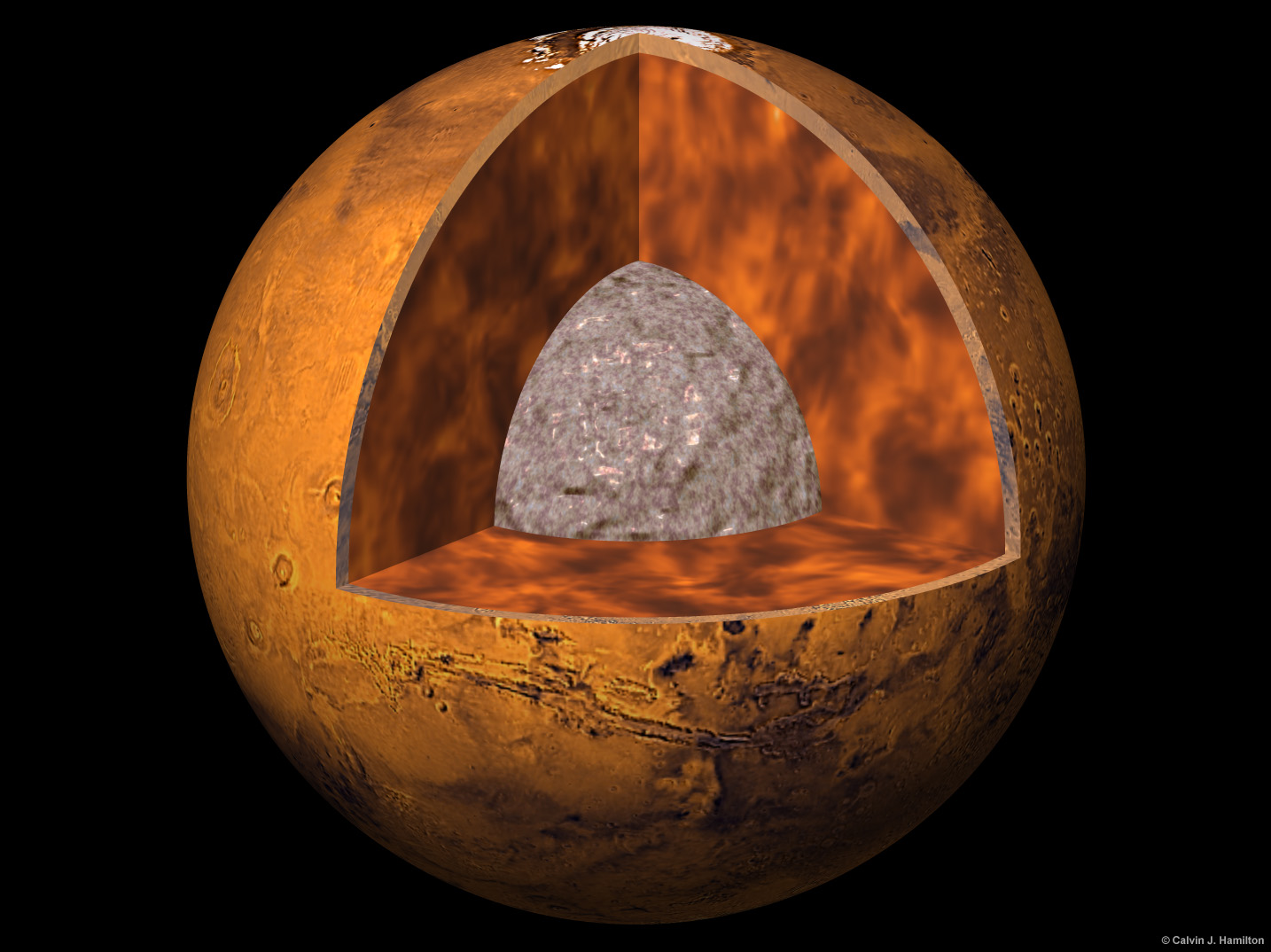
Mars is a planet with spectacular geologic features. With everything from monumental volcanoes to the deepest valleys, Mars is a planet that will continue to intrigue mankind. Mars can be divided into different categories, The Northern Lowlands, the Southern Highlands, Chryse, Tharsis, Elysium, and Hellas.

The Northern Lowlands is an area that wraps around the higher latitudes of Mars. The Northern Lowlands in contrast to the Southern Highlands, has a relatively smooth terrain with very little craters. This area is believed to be younger and has been eroded by liquid water on Mars's surface at some point in the past.
The Southern Highlands is an ancient surface. Littered with craters ranging in size from a house to the size of a US state. Other than the signs of dried river beds, the only erosion in this hemisphere appears to be wind. The reason this hemisphere is older is due to the lack of erosion across the entire region.
Tharsis is a region in the western hemisphere that is home to the largest volcanoes in the solar system. Tharsis is a highly elevated, smooth landmass. This region is smooth due to the lava that has flowed on Mars in the past. There are four volcanoes in the Tharsis region. Ascreaus Mons, Pavonis Mons, Arsia Mons, and Olympus Mons. Ascreaus Mons is the northern most of the three prince volcanoes. It is the smallest of the four. Pavonis Mons is the next largest volcano resting on the equator of Mars. Arsia Mons is the southern most of the three prince volcanoes. It is the second largest volcano. Olympus Mons, the largest volcano in the solar system, rests to the northwest of the three prince volcanoes. Olympus Mons has a land area roughly equal to the size of Arizona. This volcano is so tall that if placed on Earth would make the Himalayas look like a hill. All four volcanoes were probably made by a geologic hotspot. Since Mars shows no signs of plate tectonics, these hotspots did not appear to travel over the surface. These hotspots just kept erupting continuously making the volcanoes grow in elevation.
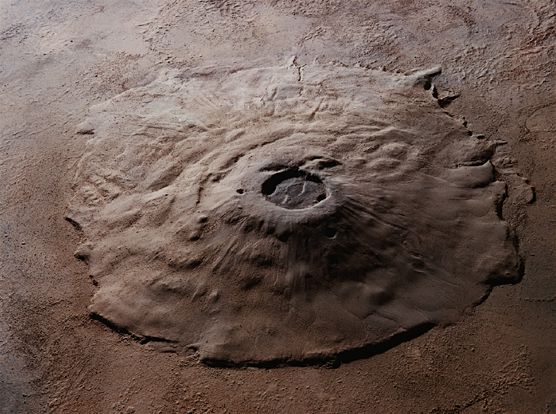
Chryse (Krysee) Basin is a lower lying area east of Tharsis. This area appears to have been a large bay at one time. With very little craters and many dried river beds running into it, Chryse has the smoothest land at its latitude. In the extreme southern Chryse region lies the largest canyon in the solar system, the Valles Marineras, or Mariner Valley. This is a "True Grand Canyon." This canyon could swallow up the Grand Canyon on Earth many times over. It stretches a length equivalent to the distance from New York to Los Angeles. At it's widest, the canyon walls of the Valles Marineras are over the horizon.

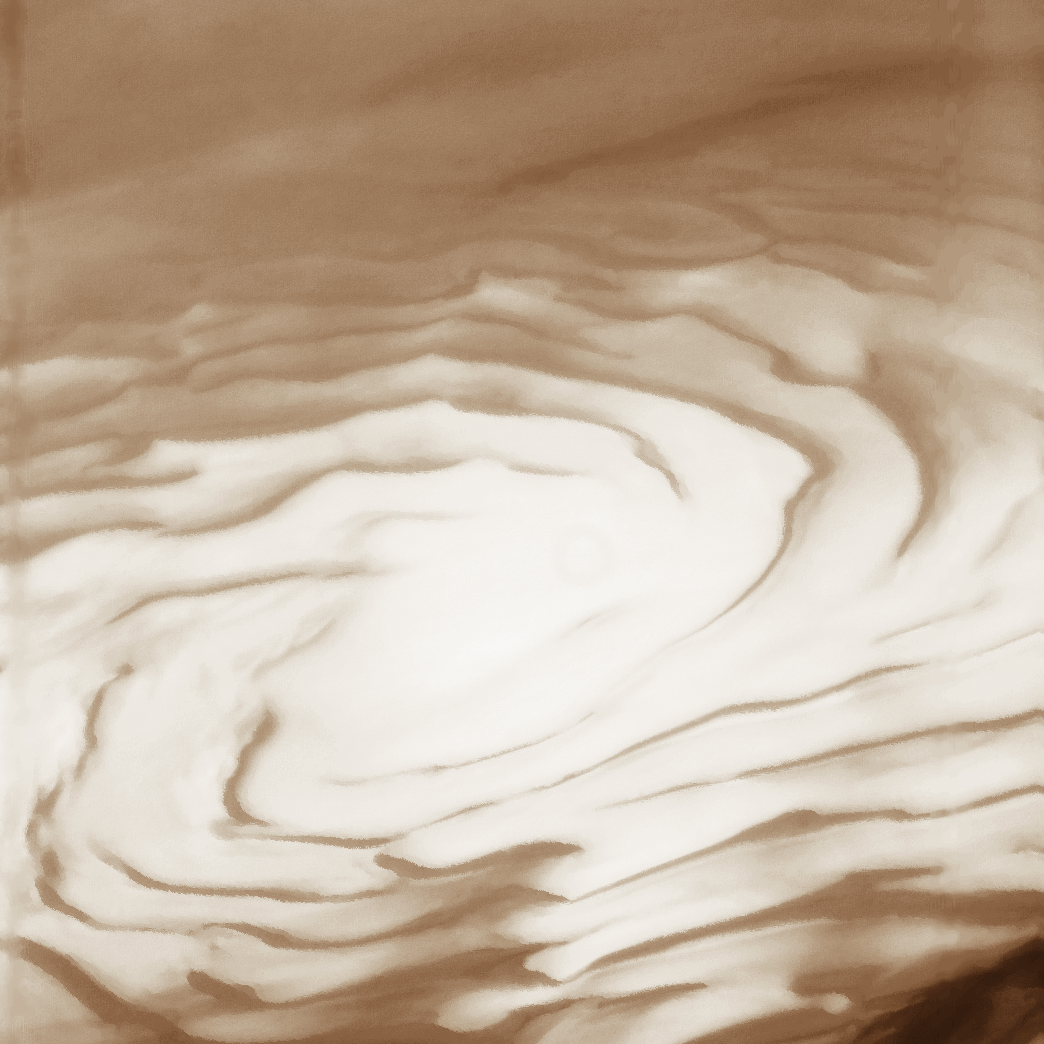
Elysium in the north eastern hemisphere is home to much smaller volcanoes. Elysium has a gradual bulge that leads up to its three small volcanoes. The largest of the three volcanoes, Elysium Mons is small in comparison to the Tharsis volcanoes. Hellas is a region in the Southern Highlands. Hellas is a very large impact crater. This crater is the deepest point on the planet. The Hellas Impact Basin is in an oval like shape suggesting that the asteroid or comet hit the planet at an angle. The Hellas Basin is large enough to take up the state of Alaska.
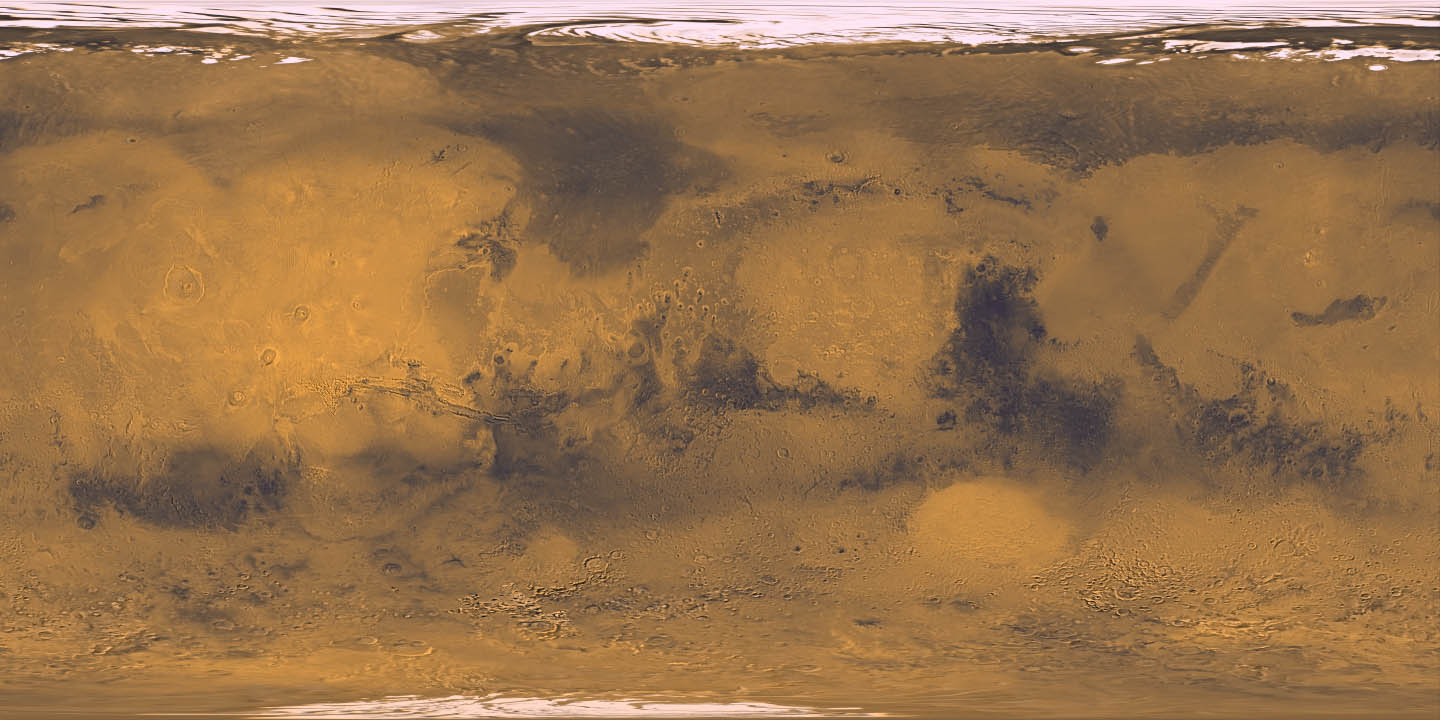
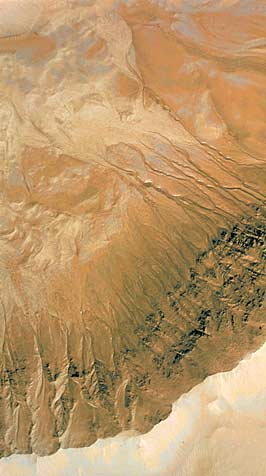
The Martian atmosphere is very thin. (Only about 6 MBS as compared to the Earth's 1000 MBS.) The Martian atmosphere is made up of mostly CO2 with small amounts of argon, nitrogen, oxygen, and water vapor. The atmosphere is thin due to photo disassociation. Also much of the atmosphere leaked away into space due to the lack of gravity.

Mars has weather systems very similar to Earth. With high and low pressure systems, Mars's daily weather can change. Mars does have water vapor in the atmosphere. In the early morning hours just before dawn, cirrus clouds, or ice clouds, form over the Tharsis region. Mars does have four seasons like Earth. Mars is tilted at 24.3 degrees and goes through periods of warming and cooling in the northern and southern hemispheres. In the summer time the northern polar ice cap melts releasing its frozen CO2 into the atmosphere leaving behind only water ice.
Mars has a very desolate climate. Everything from super cool temperatures to dust storms, Mars does not seem to be a very hospitable place. Mars has temperatures ranging from -160* to 20 *C (-240* to 60* F.) The climate is fairly stable due to the lack of atmosphere.
Space.com